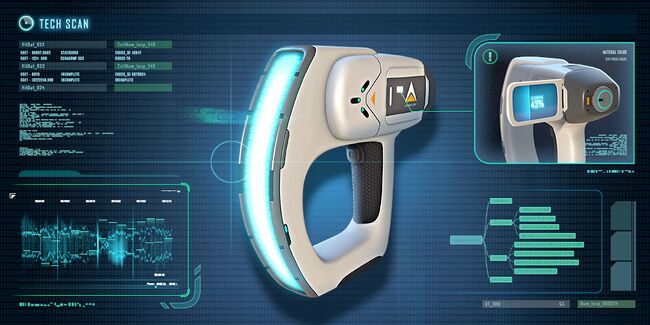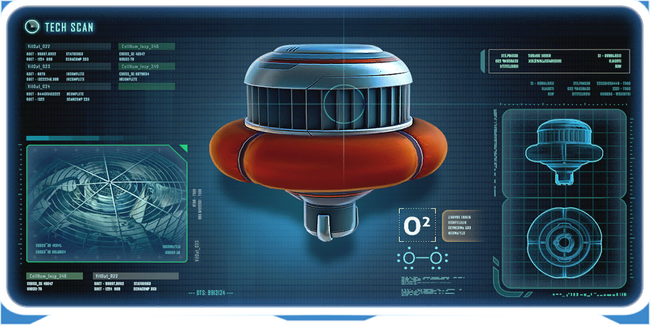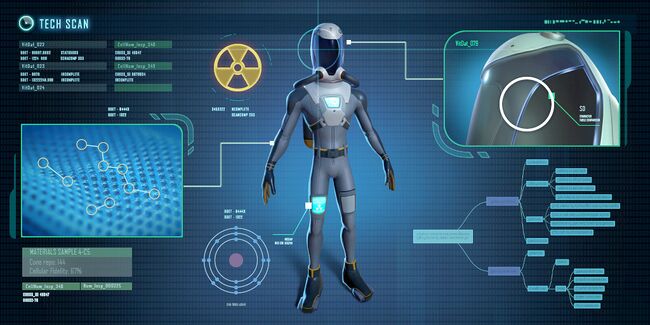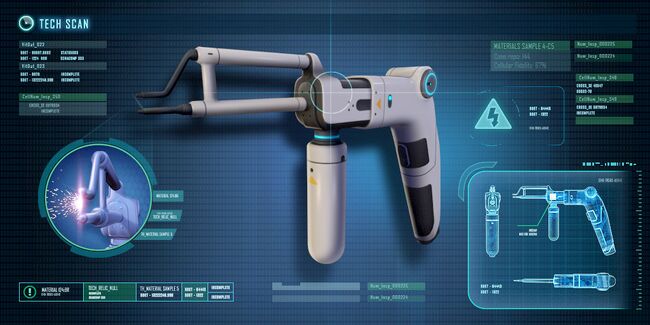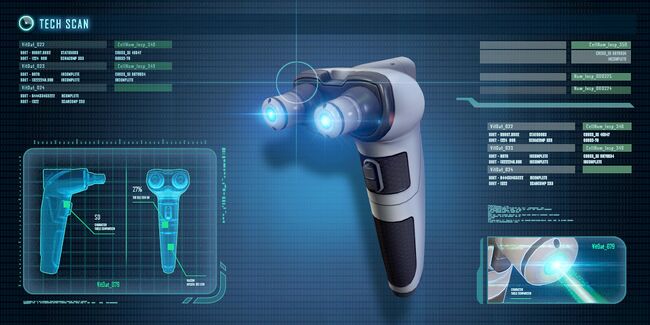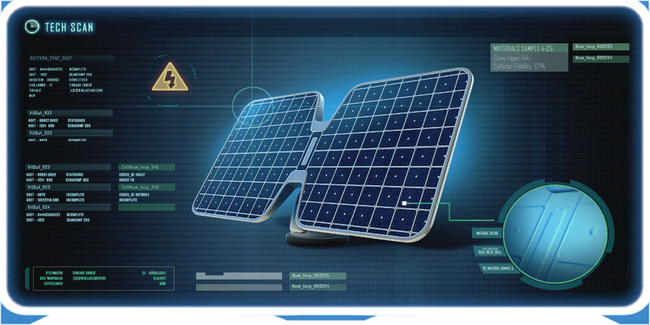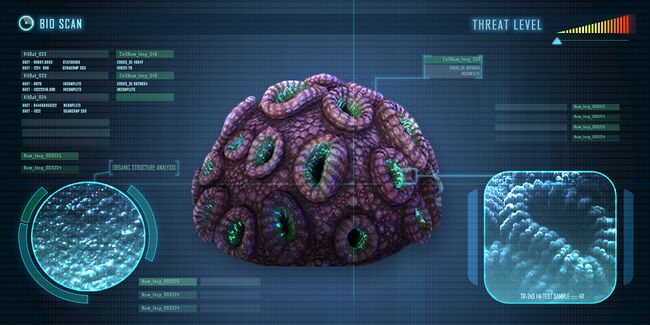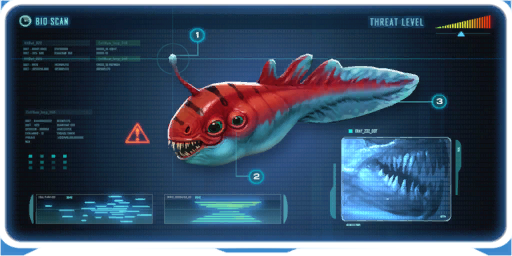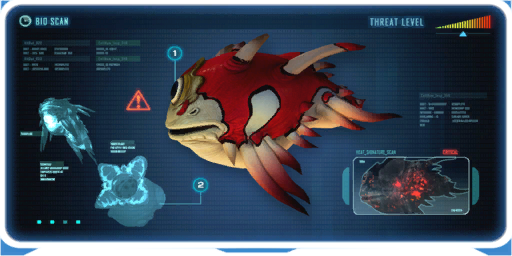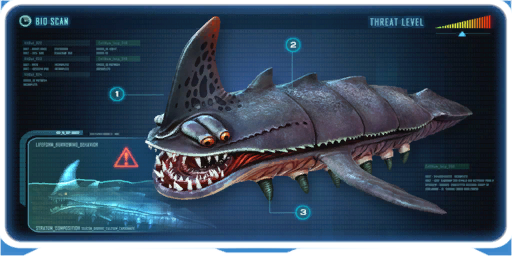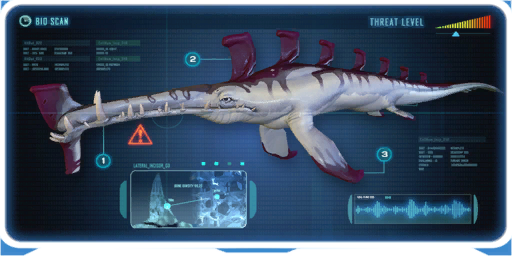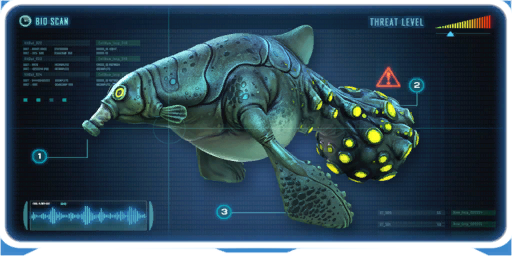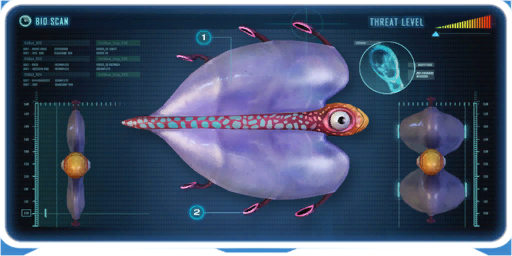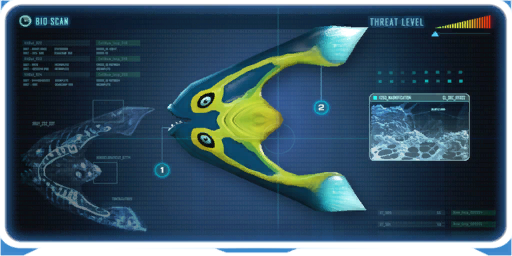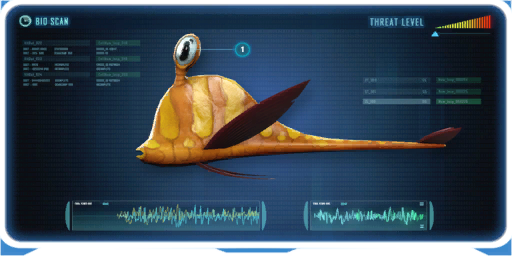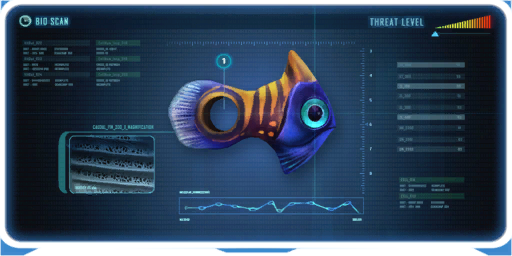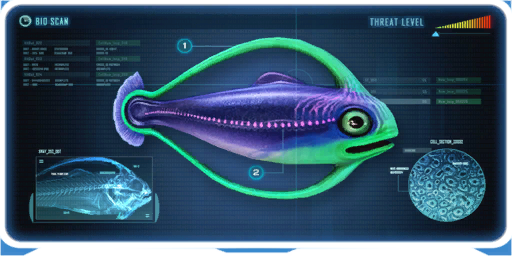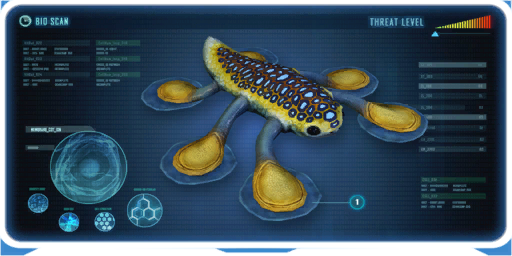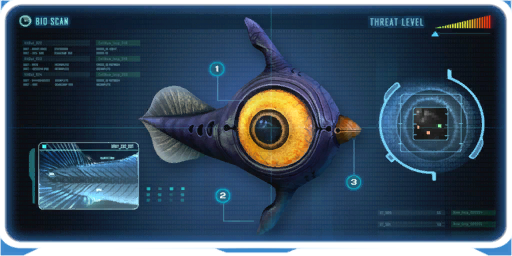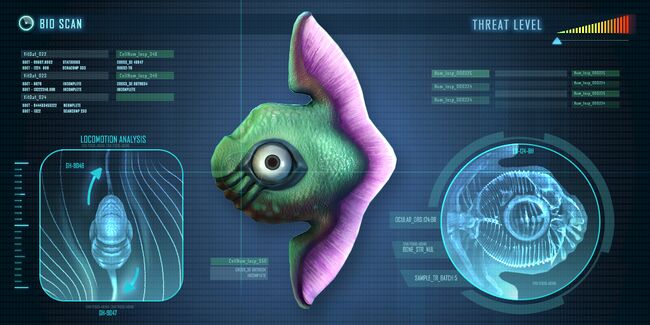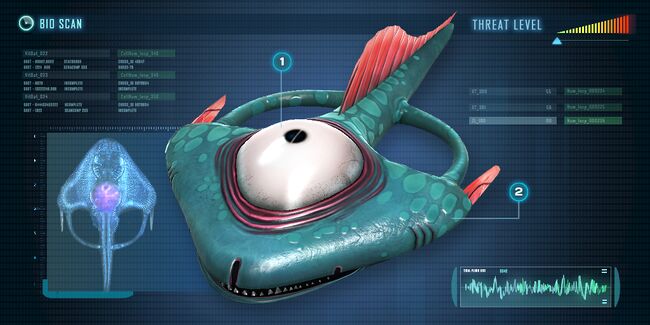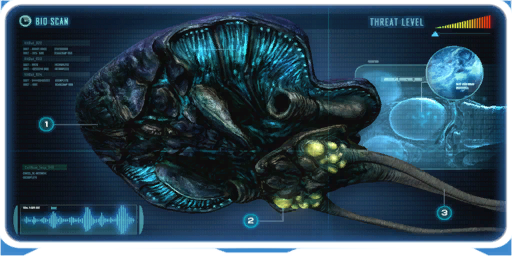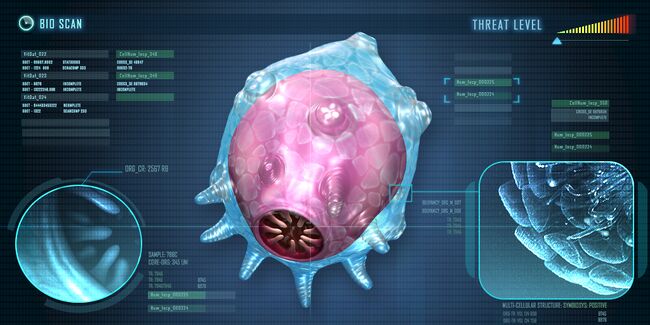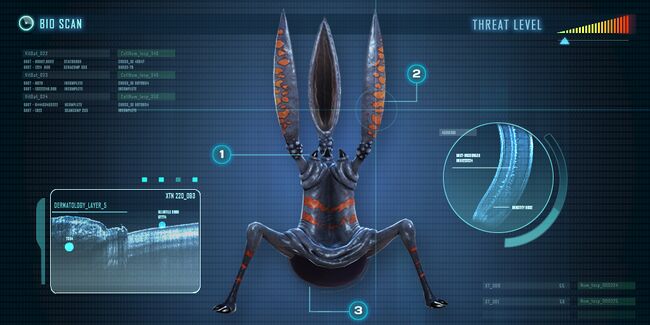Databank (Subnautica)

|
Read at own risk This article contains unmarked spoilers. Players new to the game would want to avoid or be cautious toward this article. |
The Databank is the encyclopedia of entries that are visible on the encyclopedia of the PDA.
Advanced Theories
Alien Eggs
| Alien Eggs |
| <poem>Evidence suggests that a substantial number, if not all of the local species reproduce through egg-laying. Eggs can be found resting on the seafloor, buried beneath detritus, or even wedged into cracks in the rock.
Different species likely favor different biomes as their nesting grounds. Eggs discovered in the wild are in some form of natural stasis, likely awaiting ideal conditions in which to hatch, or the delivery of some vital enzyme which will kick start the process. It is impossible to calculate the species of the egg from the exterior, however it may be possible to stimulate a hatching response if an egg is relocated to a suitable alien containment unit.</poem> |
| Source: Pick up Alien Egg |
| Specimen with Symptoms of Infection |
| <poem>This organism is displaying signs of a bacterial infection.
- Bright green blisters are forming networks around the infection sites WARNING: May be contagious. Avoid. Do not under any circumstances consume the flesh.</poem> |
| Source: Scan Infected Fauna |
Blueprints
Equipment
| Air Pumps |
| <poem>Air pumps can be used to pipe breathable air to a remote location.
- The base-attached airpump can be built at a compatible habitat, and will source oxygen directly from the habitat's oxygen generator |
| Source: Unlocked by default |
| Handheld Scanner |
| <poem>The essential science and survival tool, the scanner can be used to add new blueprints to memory, and analyze unknown entities.
It emits electromagnetic radiation in the specified direction, which is reflected by the environment and then analyzed to determine the physical make-up of the targeted object. It has four primary functions. Blueprint Adquisition: Organism Analysis: Medical Analysis: Self-Scan: 'The Alterra Spectroscope Scanner - Understanding the world so you don't have to.'</poem> |
| Source: Unlocked by default |
| Radiation Suit |
| <poem>This suit fully protects against the effects of radiation during land, sea and space exploration.
- Safety rated up to 400 Sv/hr 'The Radiation Suit: A necessary precaution in a post-MAD world.'</poem> |
| Source: Unlocked after Aurora's explosion. |
| Repair Tool |
| <poem>The repair tool can be targeted at any common device - control panels, habitat modules, radios etc. - to stitch wires and seams back together at the atomic level. All good technicians keep one of these under their pillow.
Most people don't care why it works, just that it saved their life that one time - but in case you're curious, it combines scanner and fabricator technologies to determine the proper specifications for the targeted object, and then rearranges the available physical material to match the original specs. 'The Alterra Repair Tool: Get your fix.'</poem> |
| Source: Unlocked by default |
| Time Capsule |
| <poem>These sturdy containers are designed to store written and photographic evidence for later retrieval, in addition to a number of small items. Time capsules are often fabricated by marooned survivors seeking either to aid those who find themselves in the same predicament in the future, or to leave evidence of their plight which may be found long after their bodies have disintegrated.
Most emergency escape vehicles are equipped with a time capsule by default, usually found in the cockpit, and be jettisoned on take off. Alterra requests time capsules be stocked with tools and resources which will aid those who may discover them in the future.</poem> |
| Source: Scan Time Capsule |
Habitat Instalation
| Aquarium |
| <poem>The aquarium is designed to hold and sustain up to eight small aquatic organisms, and fits inside a regular multipurpose habitat room.
Aquatic creatures make up 70% of all known species, making the aquarium a commonly deployed tool in many exploratory operations. It is just as often used to house livestock for later consumption as it is to hold specimens for xeno research. An automated environment regulation system means there's no need to feed or care for your subjects. NB Due to its size the regular aquarium is not rated for breeding applications, and creatures are highly unlikely to mate. Construct a full size alien containment unit for this purpose.</poem> |
| Source: Unlocked by default |
| Fabricator |
| <poem>Fabrication technology is the power to rearrange matter at the atomic level. It was the catalyst behind the great expansion, and remains the backbone of the modern world.
Fabricators come in all shapes and sizes, but the most common are small enough to be wall-mounted, and are used for everything from constructing everyday implements to cooking dinner. It is common today for households to keep a store of generic base materials on hand for any eventuality.</poem> |
| Source: Unlocked by default |
| Habitat Builder |
| <poem>The Alterra handheld habitat builder has been an essential tool of xenoscientists, colonists and emergency relief crews across 11 different trans-govs for more than 50 years.
- Habitat modules are hermetically sealed from the outside environment Quick Start Guide: Primary habitat systems like oxygen generation and flood control, as well as modules like the fabricator draw power and will not function without it. Additional compartments reduce overall hull integrity, depending on the external pressure. 'Quick-Build Habitats: A home far, far away from home.'</poem> |
| Source: Unlocked by default |
| Solar Panel |
| <poem>Solar power is the most prevalent power source in the galaxy, and so it is no accident that the standard solar panel is the default means of powering a habitat. A power source is a requirement of habitat oxygen generators and other onboard modules.
- Provides limited power for small outposts and survival habitats |
| Source: Unlocked by default |
Vehicles
| Mobile Vehicle Bay |
| <poem>The mobile vehicle bay is a deployable station equipped with fabrication drones, designed to construct small research and exploration vehicles from raw materials. It is a common tool in almost all industrial, scientific and colonization operations.</poem> |
| Source: Unlocked by default |
| Seaglide |
| <poem>The seaglide is a personal transportation device designed for use in oceanic environments.
- Capable of speeds of up to 36km/h in standing water 'The Seaglide: Anything that moves faster underwater is probably trying to eat you.'</poem> |
| Source: Scan Seaglide Fragments |
Geological Data
| 4546B Environment Scan |
| <poem>- Category 3 Ocean planet - Oxygen/Nitrogen Atmosphere Safety Warnings: It is not recommended to explore this environment without hazardous material suits and extensive support apparatus.</poem> |
| Source: Repair Lifepod 5 |
| Limestone Outcrop |
| <poem>These unusual geological structures often form around titanium and copper deposits, and are distinct to this planet. Closer analysis reveals the stone around the metal has been hardened against erosion, but the mechanism remains unknown.
Assessment: Titanium and copper source</poem> |
| Source: Scan Limestone Outcrop |
| Sandstone Outcrop |
| <poem>These common, porous outcrops seem to form around small amounts of precious metals, or otherwise these metals are part of a sedimentary buildup over time.
Assessment: Lead, silver and gold source</poem> |
| Source: Scan Sandstone Outcrop |
| Scattered Wreckage |
| <poem>Analysis confirms this wreckage is from the Aurora.
Outer layers of the material have oxidized, suggesting it has been heated to over 1200 Celsius. This pattern is consistent with hull disintegration during atmospheric entry. Salvage of intact portions of Alterra vessels is prohibited at legal, moral and technical levels, however scraps such as these may be reclaimed for their titanium content at any Alterra fabricator.</poem> |
| Source: Scan Metal Salvage |
Indigenous Lifeforms
Coral
| Brain Coral |
| <poem>A permanent, growing colony of microscopic organisms. This coral species has adapted to filter carbon dioxide from the environment, using the carbon to build the colony, and expelling the oxygen from specialized exhaust funnels. It is quite hardy, suggesting samples from a mature specimen could be grown artificially.
Assessment: Air tanks are equipped to siphon oxygen from the water where possible</poem> |
| Source: Scan Brain Coral |
| Coral Shell Plate |
| <poem>This variant of coral has adapted to survive in close proximity to other corals, filtering nutrients from the water and sharing them via a spore-like substance which grows around the base.
Assessment: No practical applications discovered</poem> |
| Source: Scan Coral Shell Plate |
| Giant Coral Tubes |
| <poem>The variety of coral formations on 4546B appear to be different solutions to the same problem of maximizing water and nutrient flow throughout the colony. These particular variants funnel water down a tube, filtering nutrients as they pass. Their size suggests they have been highly successful.
Assessment: Coral tube samples are rich in calcium, exploitable in bleach fabrication</poem> |
| Source: Scan Giant Coral Tubes |
| Table Coral |
| <poem>Each disk is an individual colony of microorganisms, filtering nutrients from the water.
Growth patterns indicate the colonies are in direct competition for positions with superior current or light. Unlike other coral species its structure is malleable, softly pulsating as it pumps nutrients to its extremities, and only turning rigid when it senses physical assault. The jewel-like nodes in the surface are concentrated build-ups of rare minerals the coral is unable to process. Assessment: Exploitable in computer chip fabrication</poem> |
| Source: Scan Table Coral |
Fauna
Carnivores
| Biter |
| <poem>Vicious, pack-hunting predator. 94% muscle, 4% connective tissue, 2% brain. Indiscriminate when hungry. Almost always hungry.
1. Specialized Olfactory Antenna: 2. Secondary Pair of Eyes: 3. Overdeveloped Tail Fin: Assessment: Avoid packs - Try not to bleed</poem> |
| Source: Scan Biter |
| Crashfish |
| <poem>This unusual species has developed an emergency defense mechanism based on mutually assured destruction.
1. Forward-mounted Eye: 2. Sulfur Plant: 3. Defense Mechanism: Assessment: Equip stasis rifle, repulsion cannon or similar before approaching shallow caves</poem> |
| Source: Scan Crashfish |
| Mesmer |
| <poem>Small, carnivorous lifeform with a unique hunting mechanism that enables it to hypnotize its foes.
1. Outer Wings: 2. Outer Shell: Assessment: Draw closer</poem> |
| Source: Scan Mesmer |
| Sand Shark |
| <poem>A powerful, medium-sized predator that burrows into the sand and ambushes its prey from below. As with many predators it may be possible to temporarily distract sand sharks by feeding any hungry specimens that draw close.
1. Forward Dorsal Fin: 2. Segmented Exoskeleton: 3. Feet: Assessment: Avoid - Be vigilant for ambush in sandy biomes</poem> |
| Source: Scan Sand Shark |
| Stalker |
| <poem>A streamlined predator encountered in the kelp forests in wait of prey leaving the safety of the shallows to feed. The stalker likely carved out its evolutionary niche at the sweet spot between speed and size millions of years ago, and may be one of the oldest species on the planet.
The stalker appears to be attracted to titanium deposits, which tends to sharpen and put stress on its teeth. As with many predators, it may be possible to temporarily distract hungry stalkers by feeding them. 1. Teeth: 2. Night-vision: 3. Dorsal Ridges: 4. Pelvic Fins: Assessment: Stalker teeth may have applications in enameled glass fabrication</poem> |
| Source: Scan Stalker |
| Stalker Teeth |
| <poem>Extended analysis of acquired dental samples has been completed. Samples matched to species designated 'stalker'.
Stalker teeth exhibit extraordinary lightness and strength, and contain only trace amounts of calcium. The edges show signs of wear, and are studded with metal flakes, providing evidence that the stalkers chew on metal deposits in order to sharpen their teeth. Assessment: Applications as a natural substrate in enameled glass fabrication</poem> |
| Source: Scan Stalker Teeth |
Herbivores - Large
| Gasopod |
| <poem>A slow-moving lifeform, and one of the larger herbivores on the planet. Providing a substantial meal to would-be predators, the gasopod protects its domain by filling the surrounding water with poisonous and corrosive pods whose contents dissolve even synthetic fibers.
1. Filtration System: 2. Algae Gland: 3. Large Pelvic Fins: 4. Behavior: Assessment: Approach with caution - Acidic pods may be retrieved and re-purposed</poem> |
| Source: Scan Gasopod |
| Rabbit Ray |
| <poem>A herbivorous aquatic lifeform, rabbit rays appear to live serene and solitary lives, with few predators, a natural sense of curiosity and awesomely poisonous flesh.
1. Ears: 2. Undulating Wings: Evidence indicates its large, side-facing eyes are relatively recent adaptations. It is likely there are related ray species in other environmental biomes on the planet. Assessment: Inedible but harmless</poem> |
| Source: Scan Rabbit Ray |
Herbivores - Small
| Bladderfish |
| <poem>This unusual herbivore appears to be mostly defenseless, and bears little resemblance to the other lifeforms around it.
1. Semi-permeable Bladder: 2. Open-ended Vascular Tubing: Largely oblivious to threats, and practically immobile at night, its only identified defense mechanism is that it's composed almost entirely of water, air and cartilage. Assessment: Edible (oxygen may be retrieved from the bladder and added to tanks on consumption); membrane has applications as a natural water filter</poem> |
| Source: Scan Bladderfish |
| Boomerang |
| <poem>A herbivore encountered in large numbers, found to frequent shallow waters and move in schools.
1. Serrated Teeth: 2. Twin-fins: Most active during daylight hours, and prone to flee on approach, the boomerang can more easily be observed at night when its luminescence gives it away and it seeks the shelter of the seabed. Assessment: Edible</poem> |
| Source: Scan Boomerang |
| Garryfish |
| <poem>Slow-moving and curious herbivore, camouflage indicates adaptation for evasive behavior on the ocean floor.
1. Eye Stalks: 2. Behavior: Assessment: Edible</poem> |
| Source: Scan Garryfish |
| Holefish |
| <poem>A very small herbivore found in low numbers, often around cave system entrances where their skin coloration blends into the background.
1. Bored-out Tail Fin: 2. Size: Assessment: Edible</poem> |
| Source: Scan Holefish |
| Hoopfish |
| <poem>Small, school-mentality prey fish with a unique method of propulsion, and a distant relative of the bladderfish.
1. Antennae: 2. Purple/Green Coloration: 3. Behavior: Assessment: Edible</poem> |
| Source: Scan Hoopfish |
| Hoverfish |
| <poem>A small, cautious herbivore, commonly found in kelp-rich environments.
1. Charged Footpads: Assessment: Edible</poem> |
| Source: Scan Hoverfish |
| Peeper |
| <poem>A fast prey fish encountered in shallow waters and rich in protein.
1. Developed, Side-facing Eyes: 2. Powerful Fins: 3. Beak: 4. Expulsion Tubes: While the peeper is well adapted to survive in shallow waters, a number of its features serve no discernible purpose. It would appear to be just as well suited to survive in deeper waters, and is somewhat more intelligent than the usual small herbivore. Assessment: Edible (high calorie count), further research required</poem> |
| Source: Scan Peeper |
| Reginald |
| <poem>A small herbivore, and a distant relative of the common peeper, sharing that species' well-developed, side-facing eyes; approximate size; and body profile.
1. Coloration: 2. Diet: Assessment: Edible (high calorie count)</poem> |
| Source: Scan Reginald |
| Spadefish |
| <poem>A medium-sized herbivore found in deeper waters.
1. Single Eye: 2. Mottled-green Coloration: 3. Behavior: Assessment: Edible</poem> |
| Source: Scan Spadefish |
Leviathans
| Reefback Leviathan |
| <poem>This vast lifeform is in excess of 30m long and has been designated leviathan class. Fortunately it feeds exclusively on plankton-like lifeforms in the water.
1. Chitinous Shell: 2. Enzyme Pods: 3. Local Microcosm: will often be pursued by the faster, hungrier herbivores, and thus this leviathan species is a mobile microcosm worthy of years of study in itself. 4. Lifecycle: Assessment: Harbors plants, small fish and metal-rich barnacles</poem> |
| Source: Scan Reefback Leviathan |
Scavengers & Parasites
| Floater |
| <poem>Two species living in symbiosis, which attach to and attempt to feed on any objects they come into contact with.
1. Dominant Lifeform: 2. Microorganism Membrane: 3. Helium Buffer: Assessment: May aid in flotation of sunken objects</poem> |
| Source: Scan Floater |
| Shuttlebug |
| <poem>A common scavenger at the base of the food chain.
1. Mouth Parts: 2. Three Mandibles: 3. Three Legs: Assessment: Necessary waste recycler - Presence may indicate nearby cave systems</poem> |
| Source: Scan Shuttlebug |
Flora
| ' |
| <poem></poem> |
| Source: |

